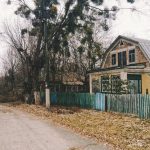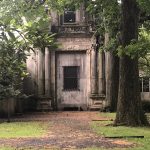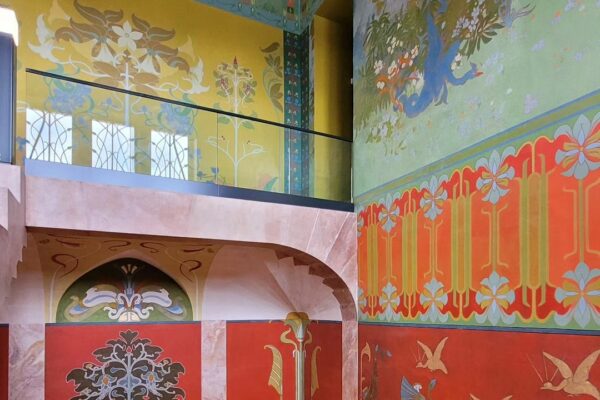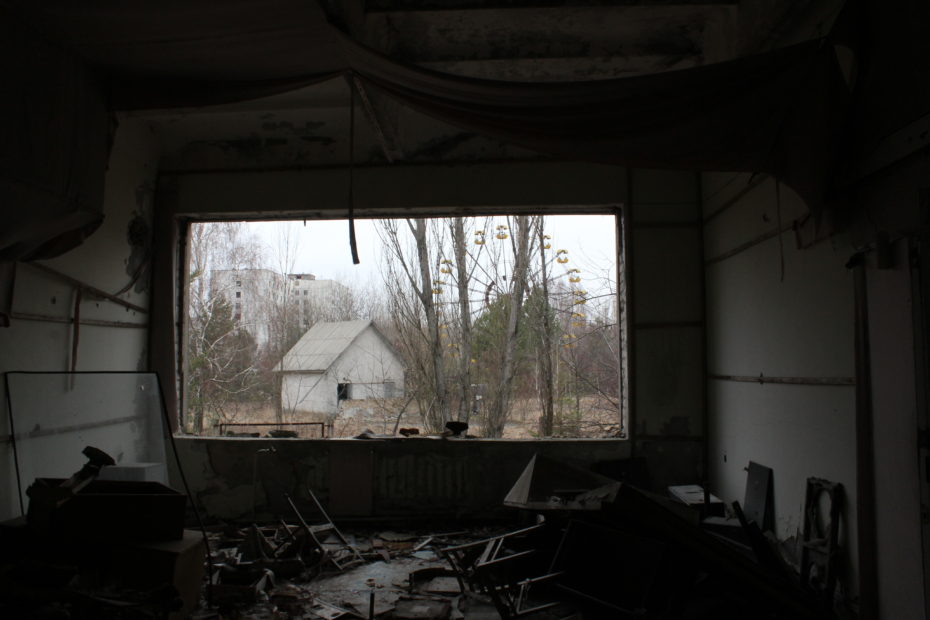
©Luke J Spencer
It is the ferris wheel in Pripyat’s abandoned amusement park that gets the most attention. For intrepid explorers to Chernobyl’s iconic Exclusion Zone, the bright yellow seats of the fun fair ride provide a stark contrast to the concrete ruins, lying desolate all around. But on the outskirts of the small city, there is one particular ruin that stands out as a particularly poignant reminder of the terrible tragedy that happened here. Welcome to Café Pripyat…
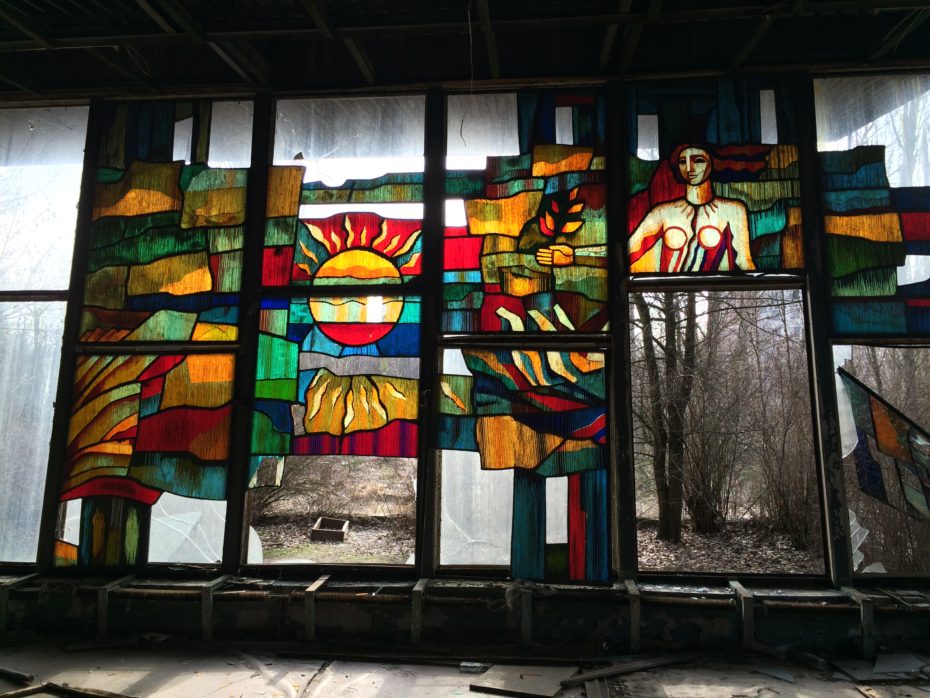
©Luke J Spencer
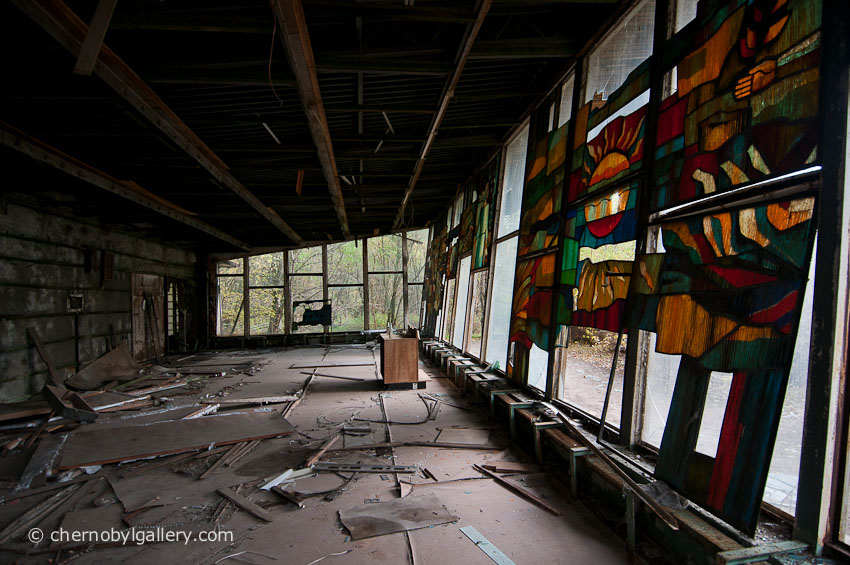
It is only a simple café, built on a river bank, but it is perhaps the most beautiful corner of the doomed city. We went deep into the radioactive Exclusion Zone to explore one of the most infamous hazardous corners of the old Soviet Empire.
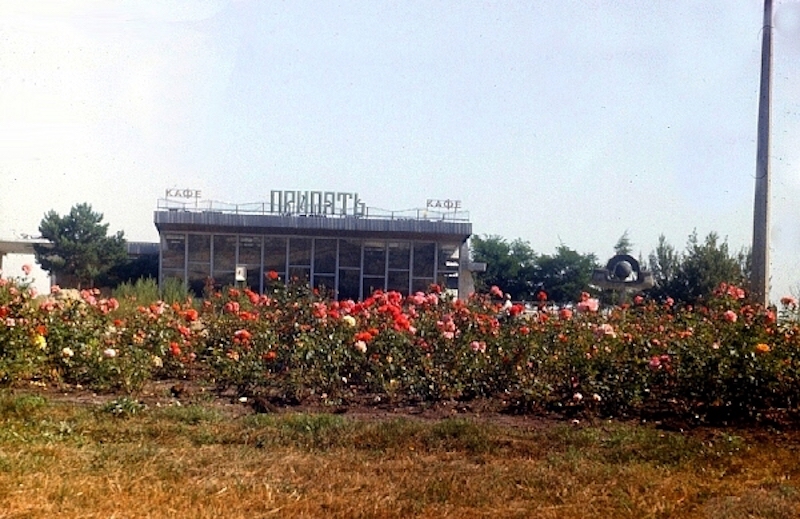
© Igor Yegorov
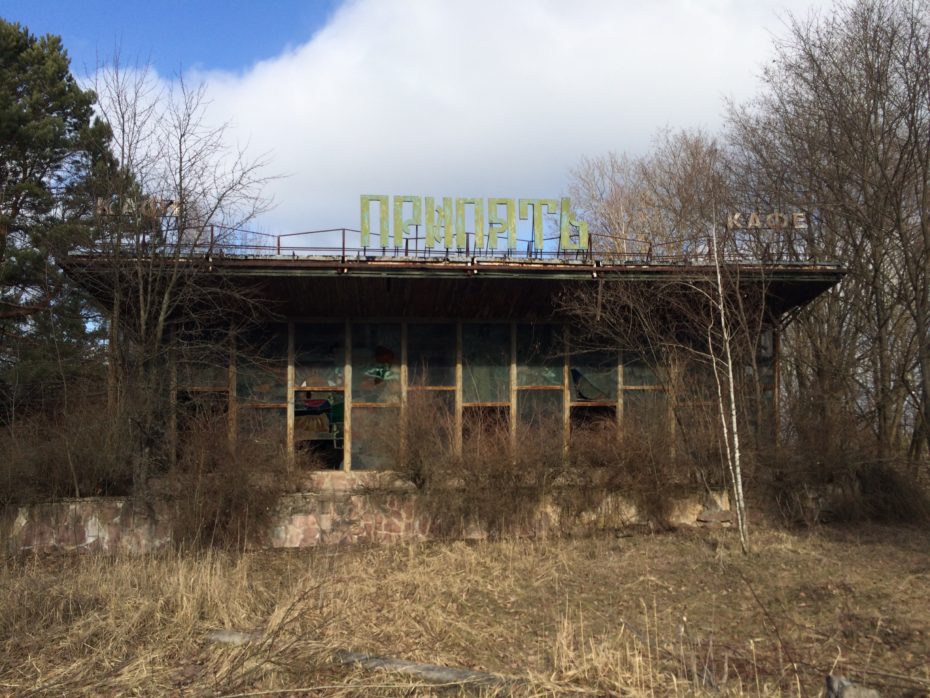
©Luke J Spencer
Pripyat is just one city in the Exclusion Zone, a 30 square mile, cut-off part of the world that surrounds the infamous failed reactor. There were in fact somewhere near 80 settlements in this part of Ukraine, ranging from small farming villages, to the nearly 1,000 year old main town of Chernobyl itself.
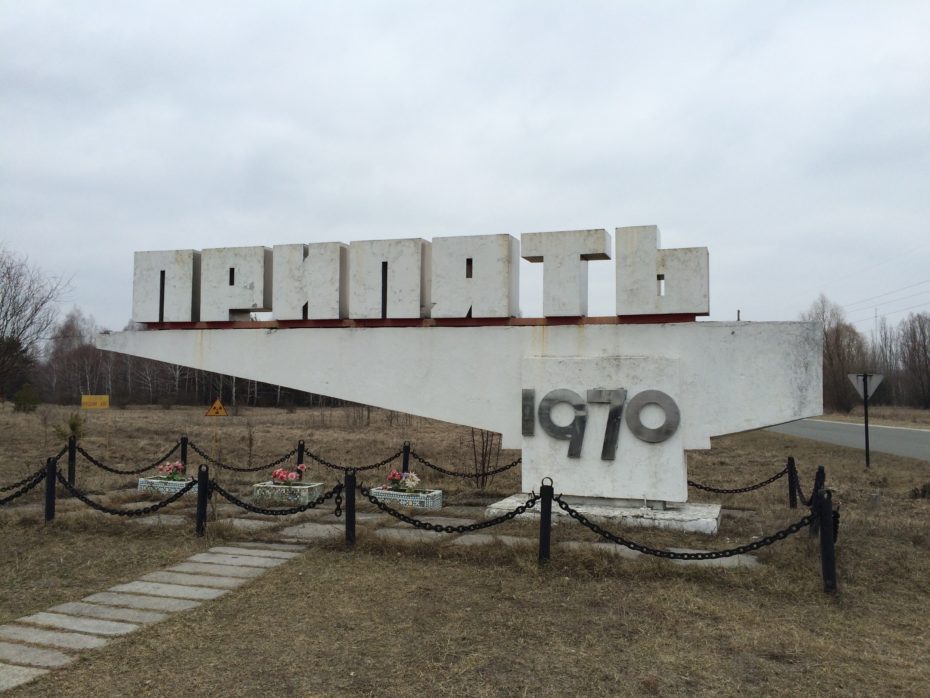
©Luke J Spencer
Pripyat was different. Opening in 1970, it was custom built as a modern, small scale city for the workers and their families. It was located just down the road from the nuclear power plant, and the majority of its 50,000 inhabitants were employed and lived in the shadow of the reactors.
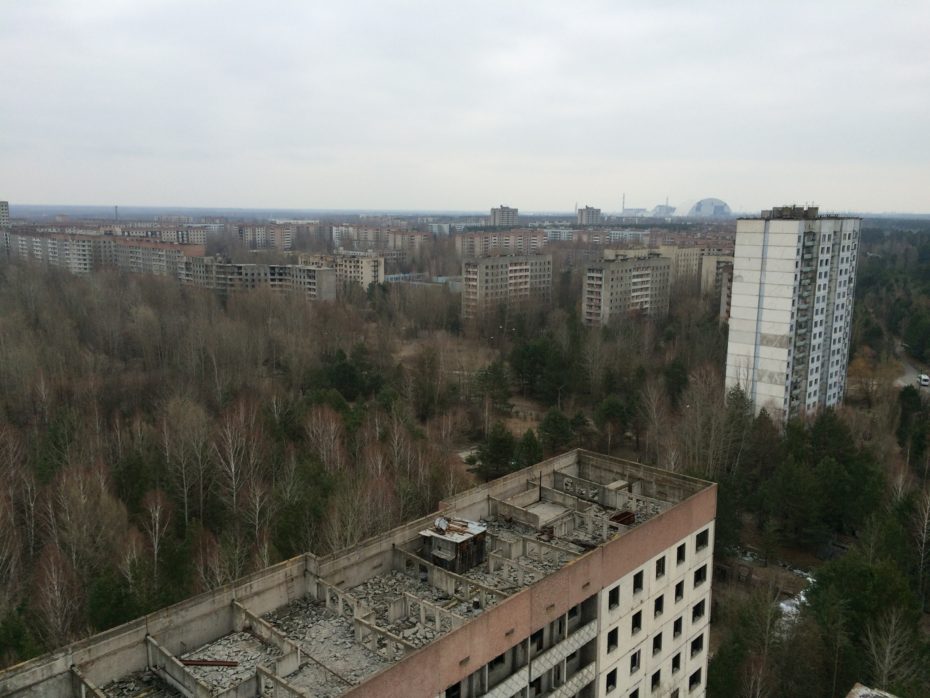
©Luke J Spencer
But given the nature of the fledgling nuclear industry, the population of Pripyat was almost entirely young; it is thought that the average age of the Pripyat citizen was around just twenty-six.
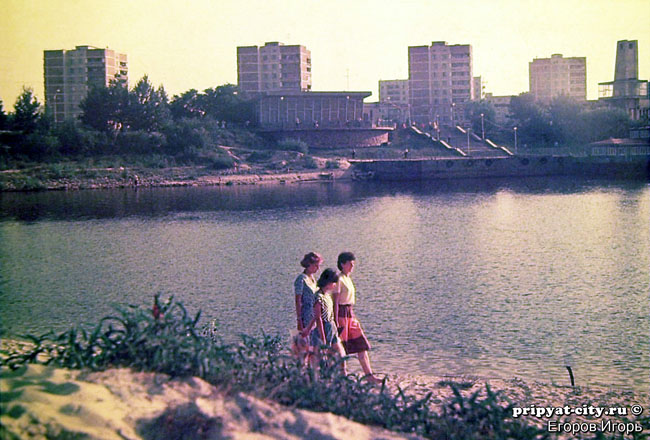
©Igor Yegorov
Pripyat was built along the lines of most Communist architecture; solid, concrete high rise apartment blocks, wide concrete central boulevards, and modern concrete shopping centres.
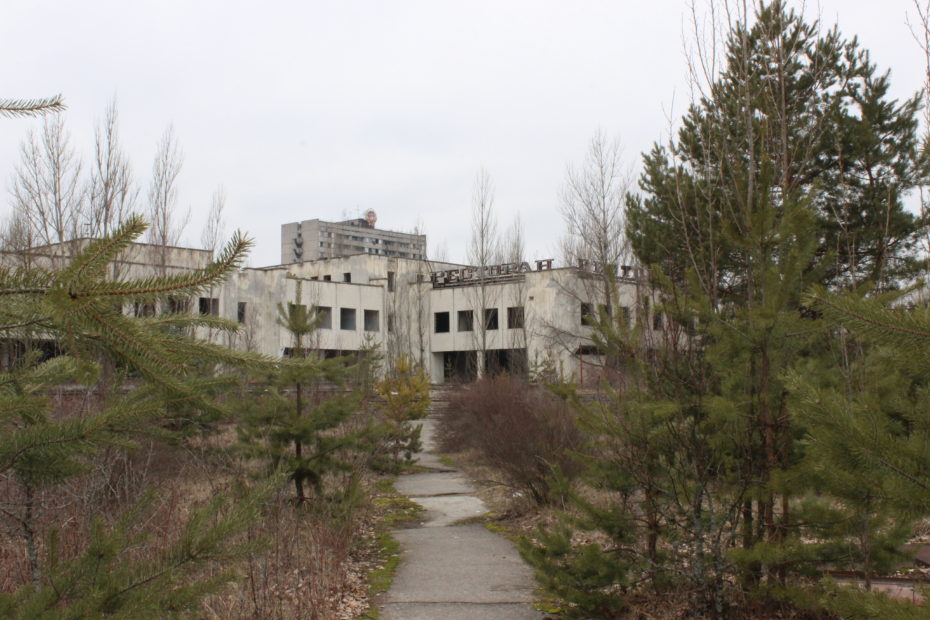
©Luke J Spencer
But to cater to its young citizens it was also filled with nightclubs, cinemas, concert halls. There were some estimated 30,000 roses planted throughout the city. It even had its own football team, FC Pripyat, and stadium.
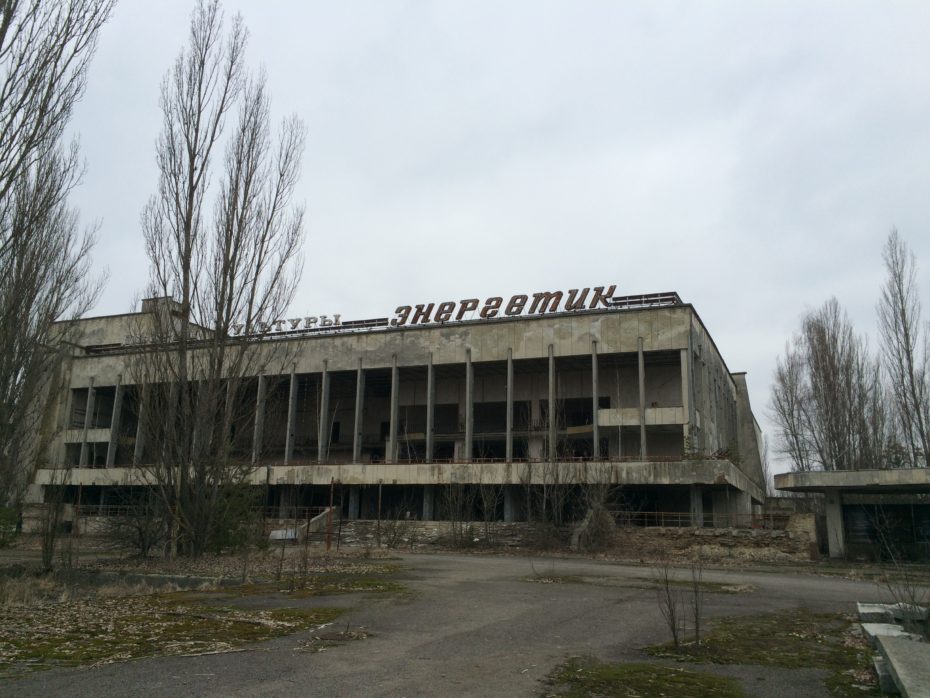
©Luke J Spencer
By the river bank was the Cafe Pripyat. It hugged the shoreline, and was known affectionately by locals, as ‘the Dish’.
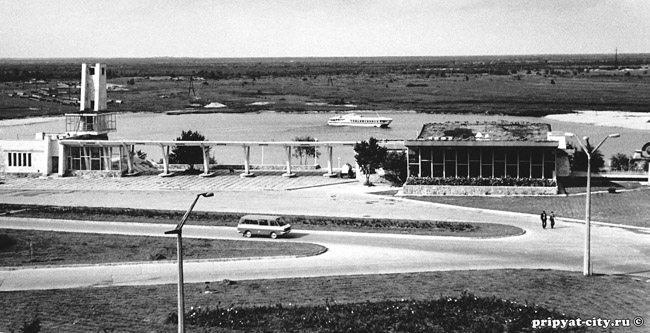
©Vitaly Kozlov
What made the Café particularly beautiful was its stained glass…
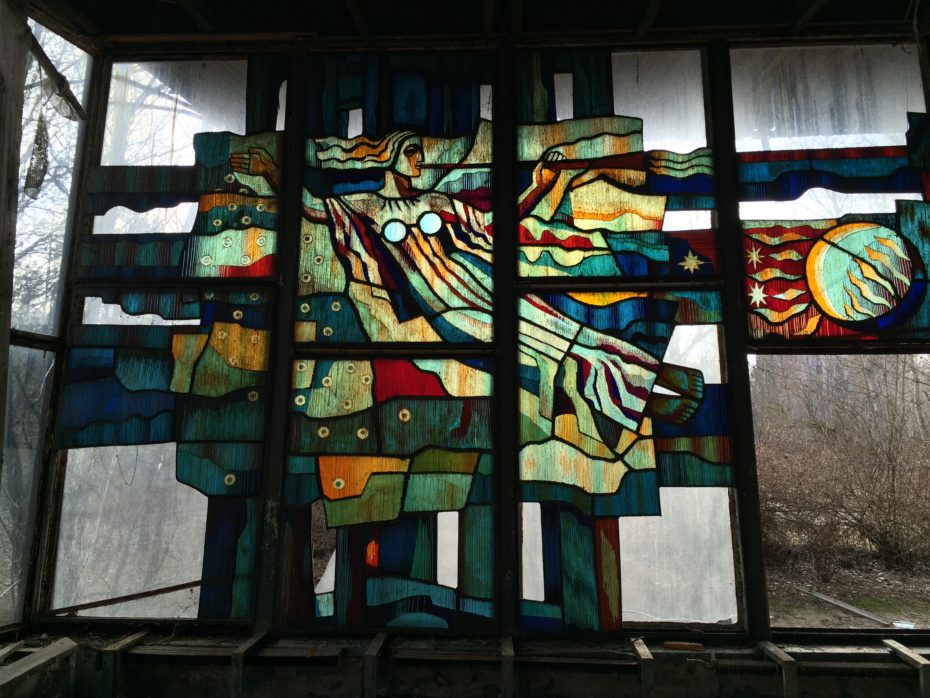
©Luke J Spencer
Today, Pripyat and virtually all of the Exclusion Zone is in ruins. Soviet authorities told the evacuating population that they would be returning soon, and to bring only a few suitcases. The disaster of April 1986 shows just how swiftly nature can reclaim even a modern city.
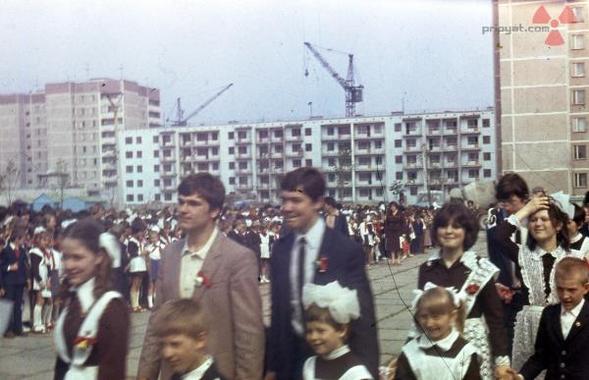
© chernobylgallery.com
But thirty one years later, the stained glass of Cafe Pripyat is remarkably intact…
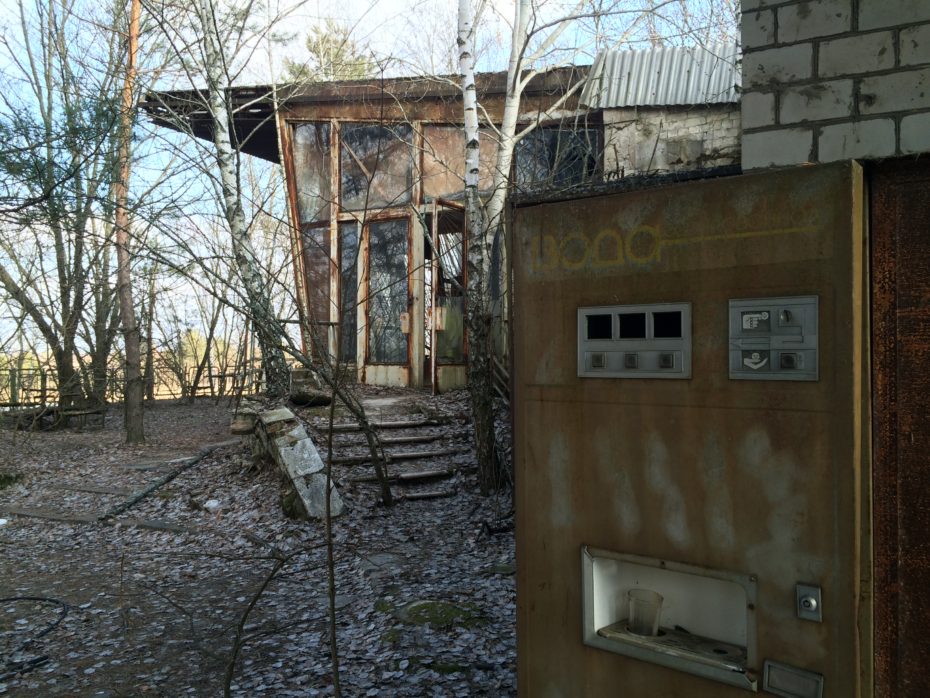
©Luke J Spencer
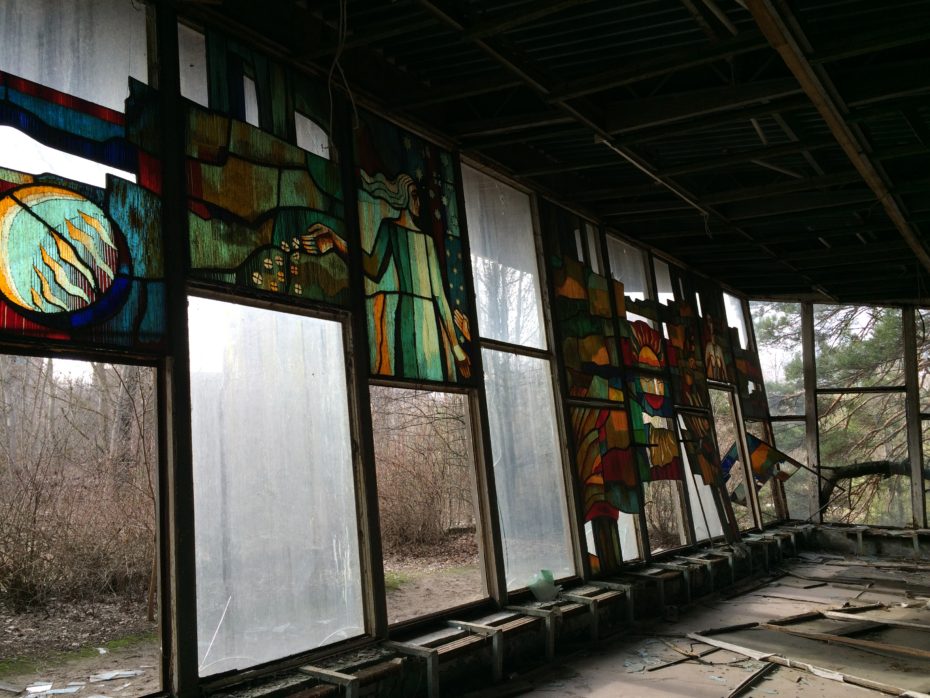
©Luke J Spencer
Perhaps what makes the cafe particularly poignant is that it is easy to picture what once went on here. It was a popular meeting place to relax, spend weekends by the river, to spend romantic evenings.
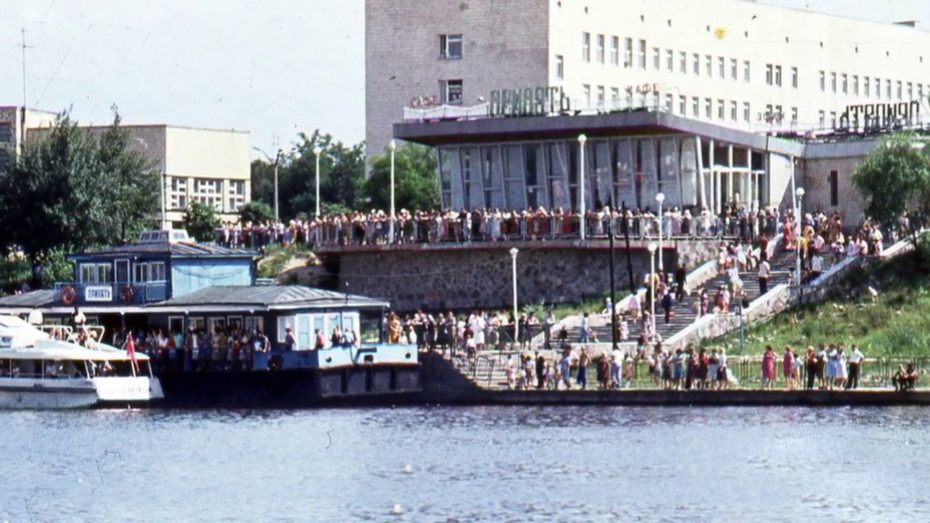
©chernobylgallery.com
Of the few archival photographs of Pripyat still in existence, a handful show Cafe Pripyat in its heyday. River boats are docked at the pier, just a few steps down from the cafe; the terraces throng with pleasure seekers, couples, and young parents pushing strollers.
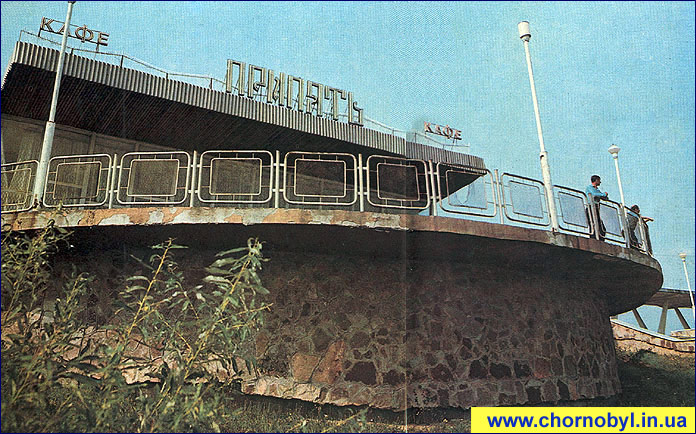
For Paul, custodian of The Chernobyl Gallery, the Café holds a special interest; “compared to the uniform blocks that form the basis of much of the city”, explains, “the architecture of the café, a building designed purely for pleasure, is a radical joy and provides an insight into the forward thinking attitude and optimism of the city at the time.”
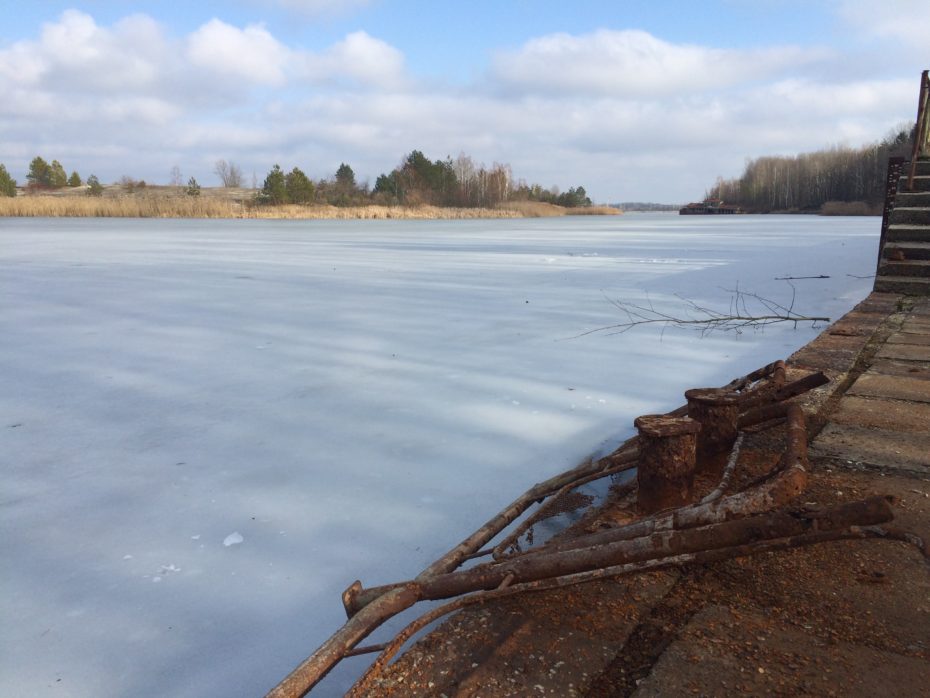
©Luke J Spencer
Walking amidst the ruins of Pripyat today is a sobering experience. The bus stops, supermarkets, avenues and homes are completely desolate; it is perhaps a tragic reminder that there are somethings humans shouldn’t tinker with. In just thirty years without people, one of the most modern cities behind of the former Soviet Union is steadily being reclaimed by nature. But the small cafe by the river, with its enduring stained glass windows, show that it was once quite beautiful.
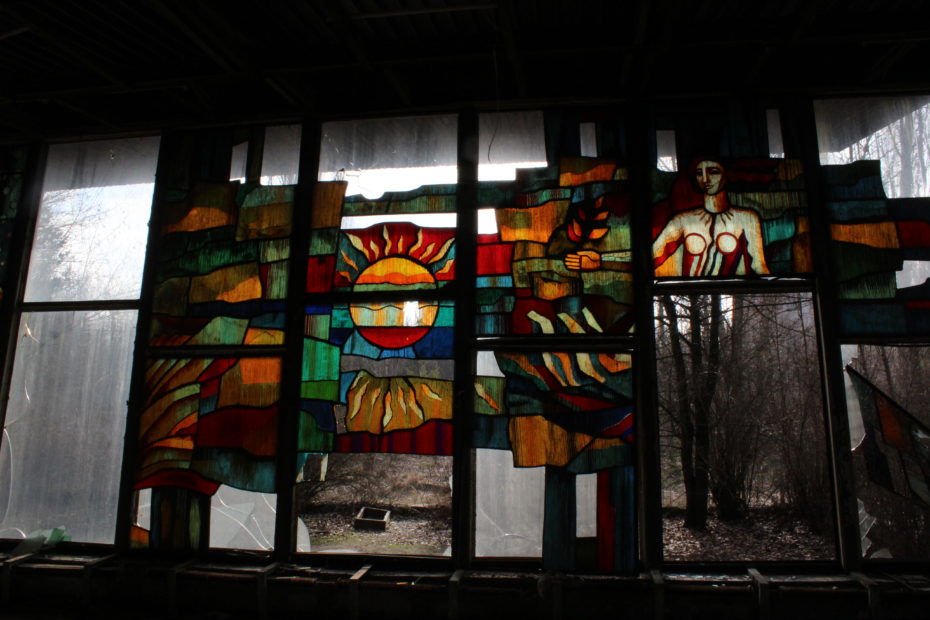
©Luke J Spencer



